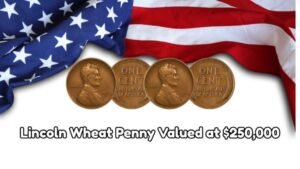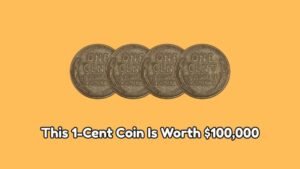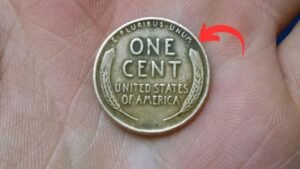Imagine discovering a penny in your change that’s worth over a million dollars. It might sound like a fantasy, but for a select few, this dream has become a reality. The 1943 Lincoln Wheat Penny, due to a rare minting error during World War II, has fetched prices as high as $1.3 million at auctions. These extraordinary coins are still occasionally found in circulation, making them a tantalizing prospect for collectors and casual coin holders alike.
The Wartime Error That Created a Numismatic Legend
In 1943, amidst the resource demands of World War II, the U.S. Mint shifted from using copper to zinc-coated steel for penny production to conserve copper for the war effort. However, a small number of copper planchets (coin blanks) from 1942 were mistakenly left in the minting presses. These were struck with the 1943 date, resulting in a limited batch of copper pennies that were released into circulation unnoticed. It’s estimated that only about 20 to 30 of these 1943 copper pennies exist today, making them some of the rarest and most valuable coins in American history
Why Is the 1943 Copper Penny So Valuable?
The value of the 1943 copper penny stems from its rarity and the historical context of its creation. Collectors highly prize coins with unique stories, and the accidental minting of copper pennies during a time when copper was scarce adds to their allure. One such penny sold for $1.7 million in 2010, and others have fetched similar high prices at auctions.
How to Identify a Genuine 1943 Copper Penny
To determine if you have a genuine 1943 copper penny, consider the following steps:
- Check the Date: Ensure the coin is dated 1943.
- Magnet Test: Use a magnet to test the coin. Steel pennies will stick to a magnet, while copper ones will not.
- Weight Test: Copper pennies weigh approximately 3.11 grams, whereas steel pennies weigh about 2.7 grams.
- Professional Appraisal: If your coin passes the above tests, consult a professional coin grading service for authentication.
Beware of Counterfeits
The high value of the 1943 copper penny has led to numerous counterfeit attempts. Some common methods include copper-plating steel pennies or altering the dates on other coins to read “1943.” Professional authentication is crucial to confirm the legitimacy of such a coin.
Other Valuable Lincoln Wheat Pennies
While the 1943 copper penny is among the most valuable, other Lincoln Wheat Pennies also hold significant worth:
| Year | Mint Mark | Notable Feature | Estimated Value |
|---|---|---|---|
| 1909 | S VDB | Low mintage with designer’s initials | Up to $100,000 |
| 1914 | D | Low mintage | Up to $100,000 |
| 1955 | None | Double die error | Up to $50,000 |
| 1943 | D | Bronze composition | Up to $1.7 million |
Real-Life Discoveries
There have been instances where individuals discovered valuable pennies in everyday situations:
- A man found a 1943 copper penny in his pocket change and sold it for over $1 million.
- Another individual inherited a coin collection containing a rare 1909-S VDB penny, which fetched a high price at auction.
These stories highlight the importance of checking your change and old coin collections.
Conclusion
The tale of the 1943 Lincoln Wheat Penny serves as a reminder that treasures can be hidden in plain sight. With the U.S. Treasury planning to cease penny production by early 2026, these coins may become even rarer and more valuable. Whether you’re a seasoned collector or someone who occasionally checks their change, the possibility of finding such a coin adds a sense of excitement to everyday transactions.
Frequently Asked Questions
Q: How can I tell if my 1943 penny is copper or steel?
A: Use a magnet. Steel pennies will stick to a magnet; copper ones will not.
Q: What should I do if I think I have a rare penny?
A: Consult a professional coin grading service for authentication and appraisal.
Q: Are there other valuable pennies besides the 1943 copper penny?
A: Yes, pennies like the 1909-S VDB, 1914-D, and 1955 double die are also highly valuable.
Q: Why is the U.S. Treasury ending penny production?
A: Due to the high cost of production, which exceeds the coin’s face value, and to save approximately $56 million annually.



